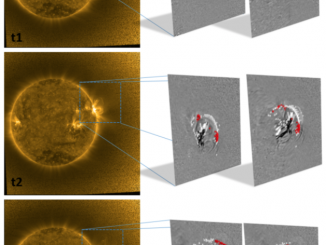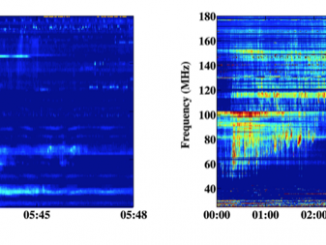Radio and X-ray Observations of Short-lived Episodes of Electron Acceleration in a Solar Microflare
by R. Sharma et al.
In a solar flare, the plasma is locally heated and particles are accelerated to energies from a few tens of keV to MeVs. X-ray bremsstrahlung emission and radio gyrosynchrotron emission are highly complementary and provide diagnostics of the timing, location and spectral properties of flare-accelerated electrons in a broad energy range. Here we present comprehensive observations of multiple individual bursts during a GOES B1.7-class (back-ground subtracted) microflare observed jointly in […]



